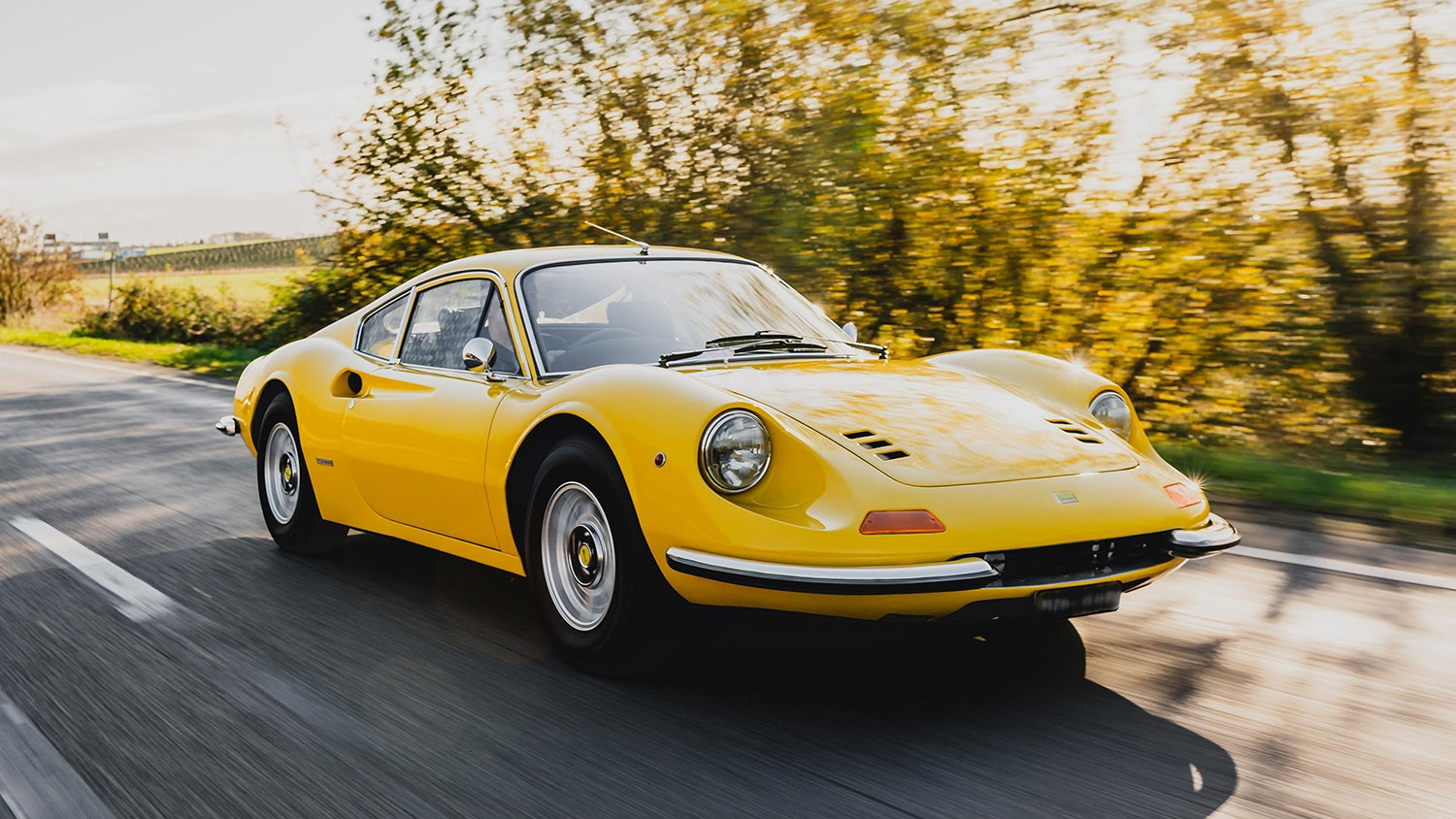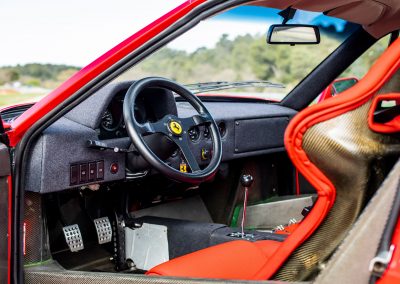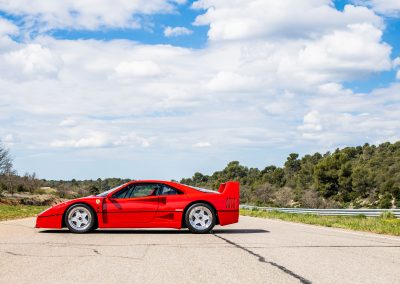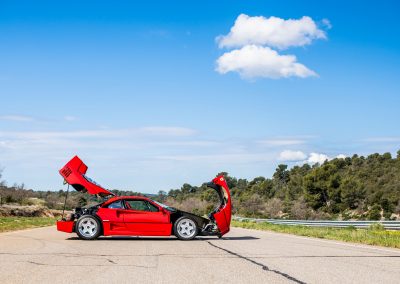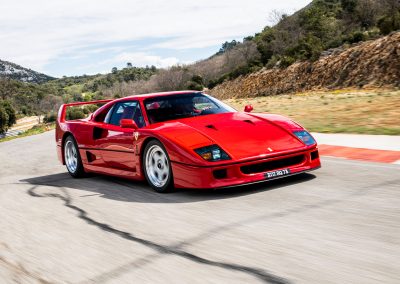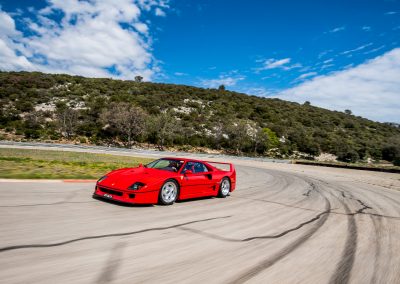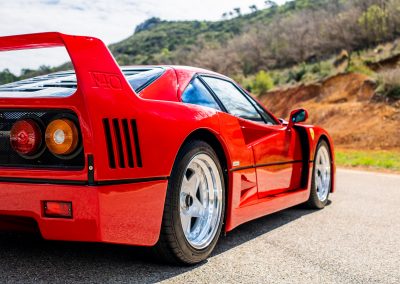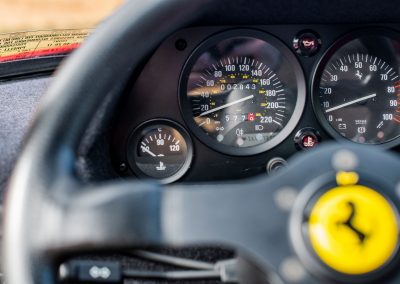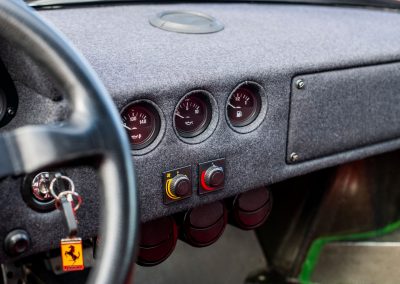BUYER’S GUIDE
Dino 206 GT/246 GT Review
“Almost a Ferrari” according to the brochure but, in fact, a template for Maranello’s mid-engined cars to this day, and still one of its most beautiful…
Engine
2.0-litre V6 petrol/2.4-litre V6, petrol
Power
180PS (132kW) @ 8,000rpm/195PS (143kW) @ 7,600rpm
Torque
187Nm (138lb ft) @ 6,500rpm/226Nm (166lb ft) @ 5,500rpm
Kerb weight
900kg (dry)/1,080kg (dry)
0-62mph
N/A
What Is It?
The junior Ferrari named after Ferrari Junior, the 206 GT was originally sold under the Dino branding alongside Fiats of the same name, the collaboration brought about by the need to homologate a small V6 for Formula 2 racing.
For all the apparent caution about having the old man’s badge on the nose the 206 GT was, cylinder count aside, a true Ferrari from the start, with a racing engine at its heart and various brand ‘firsts’, including being the first mid-engined road car, the first with electronic ignition and more besides.
Even by Pininfarina’s standards the seductively curvy bodywork is arguably the sexiest seen on any Ferrari, the metal flowing like a satin sheet thrown over a three-quarter scale prototype racing car, the delicately curved front arches, buttressed rear bodywork and Kamm tail all celebrated in the current 296 GTB.
Whatever it lacks in ‘proper’ Ferrari firepower the Dino more than makes up for in sheer style and effervescence, and values have rocketed as a result.
Corrosive Areas
Chassis tub (246 GT and GTS)
Wheelarches
Rear panels
Checklist
- Dino name came from Enzo Ferrari’s son, who was working on a vee-engine at the time of his premature death in 1956 and became associated with a sub-brand of small, lightweight prototypes with V6 engines
- The Dino brand was also used by Fiat in its own series of cars to ensure the V6 could be produced in sufficient scale to meet homologation rules for Formula 2
- Teased in a series of Pininfarina design studies and prototypes, a roadgoing Dino was eventually shown in 1967 – while the looks were clearly inspired by the race cars the engine was turned 90 degrees to a transverse arrangement with the gearbox mounted below and behind the crankcase
- Dino 206 GT road car finally went into production in 1968 with a 2.0-litre engine and all-aluminium bodywork
- After a nine-month production run of only 152 cars the 206 was replaced by the 2.4-litre 246 GT
- This featured a bigger 2.4-litre, iron-blocked engine, steel bodywork (though doors, bootlid and other panels were aluminium on some cars) and a 60mm wheelbase stretch
- Easiest visual ‘tell’ for a 246 GT compared to the 206 is flush-fitting fuel filler under a flap on the left buttress – the earlier car has an exposed cap instead
- 246 GT production is typically divided into L, M and E series
- L series cars all left-hand drive and identifiable by their centre lock wheels with knock-off hub caps – later cars used more conventional five-stud mounts for the Cromodora alloy wheels
- Other differences are detail, with minor mechanical updates for the engine, gearbox and external trimmings
- GTS ‘targa’ option added in 1972; later cars gained popular option of wider Campagnola wheels and Daytona-style seats, often referred to as ‘chairs and flares’ from the wider rear bodywork
- High-revving V6 is carb-fuelled but the first Ferrari road car with electronic ignition – this can be troublesome, wiring likewise fragile and susceptible to throwing up issues
- Cooling system can be problematic, so make sure the temperature holds steady once the car is warmed up
- Chain-driven cams mean engine is fundamentally robust, but it’s still demanding of regular oil changes and proper upkeep – make sure there’s evidence of this in any prospective purchase
- Gearshift can be stiff when cold, especially from first to second – if this persists or there are any graunches when warm this could point to worn synchros and an expensive rebuild
- Steel frame and body on 246s can rust from the inside out, so insist on a thorough, expert inspection and documentation of any restoration – most cars will have had correctional work at some point so make sure it’s been done by a credible specialist and not bodged
How does it drive?
Assuming you can squeeze yourself in, the Dino is the original when it comes to mid-engined Ferraris, with an uncluttered footwell, sparse dash, functional materials and – of course – that gated five-speed manual sprouting from the floor. Imagine a Lotus Elise, just a lot more exotic and valuable…
Like any old-school Ferrari the fluids need to warm through before you can engage gear or shift to second without veins bulging on your forearm. Once it’s up to temperature, though, the race-car style dog-leg arrangement makes more sense, with second to third a single swipe and cross-gate shifts to fourth and fifth a click-clack away.
For a small and light car the controls will be surprisingly physical for a modern driver, but once underway the consensus is it lightens up to become a true delight. An MX-5 would leave it for dead these days but if ever there’s a car to prove performance is about quality not quantity the Dino is it, the V6 spinning freely and making full use of even its modest stable of horses and the pace perhaps more usable and appropriate to what you can enjoy on the road than any more modern mid-engined Ferrari.
What’s good?
The very delicacy of the Dino’s tiny size and modest power output may have been a matter of concern at one stage, but these days appreciation of the stunning looks, the technical intrigue of the mechanical underpinnings and the usable performance are all highly prized among those motivated by more than just horsepower. Because this is a car at least as interesting historically as it is gorgeous.
With a kerbweight of around a tonne, the purity of response of a carb-fed racing engine, a slick synchromesh gearbox and undiluted feedback from all the controls the Dino is also as good to drive as it is to look at. And that’s saying something, given this is perhaps one of the best looking classics of any era.
What’s bad?
The days of Dinos being the unappreciated and affordable ‘starter Ferrari’ have long gone. So, having fallen into the league of collectable classics the usual caveats apply of making doubly sure of the history and condition of any cars you’re looking at, and following your head rather than your heart.
Practically speaking the Dino is very much on the teeny side as well, and a very snug fit for anyone of, shall we say, a modern physique. This may or may not be a problem for you but if you want a car for racking up miles there may be better choices.
There’s also no escaping the fact this is an Italian car of a certain vintage, and while mechanically relatively simple any work will come with the inevitable ‘Ferrari tax’ in terms of costs, especially if that involves sorting out any structural corrosion.
Which model to choose?
While the original 2.0-litre 206 GT is down on power compared with the later 2.4-litre 246 GT the significant weight advantage of its all-aluminium construction and marginally revvier nature of the engine arguably make up for it. This also makes it considerably more exotic, its rarity – most sources agree on there being just 152 built – sealing the deal as the one for the real purists to chase. With a premium to match.
On that basis there’s no shame seeking a relatively more numerous 246, the GTS with its removable roof panel a tempting wind in the hair option while the GTB has the purity of the coupe design on its side.
The centre-lock wheels of the earlier series cars look cool but beyond that the differences are really in the finer details, so really it comes down to condition, price and colour with the usual advice being to buy the best you can afford on the basis a cheap one will likely be a false economy.
Specifications
Engine
2.0-litre V6 petrol/2.4-litre V6, petrol
Power
180PS (132kW) @ 8,000rpm/195PS (143kW) @ 7,600rpm
Torque
187Nm (138lb ft) @ 6,500rpm/226Nm (166lb ft) @ 5,500rpm
Transmission
Five-speed manual, rear-wheel drive
Kerb weight
900kg (dry)/1,080kg (dry)
0-62mph
N/A
Top speed
146mph
Production dates
1968-1969 (206 GT)/1969-1974 (246 GT and GTS)
Get an online quote in minutes or call us
Monday to Friday from 09:00 - 19:00
Saturday from 09:00 - 14:00
Sunday from 10:00 - 14:00
or Arrange a call back.
Get an Online Quote Now
Arrange a Call Back
win a year's car insurance
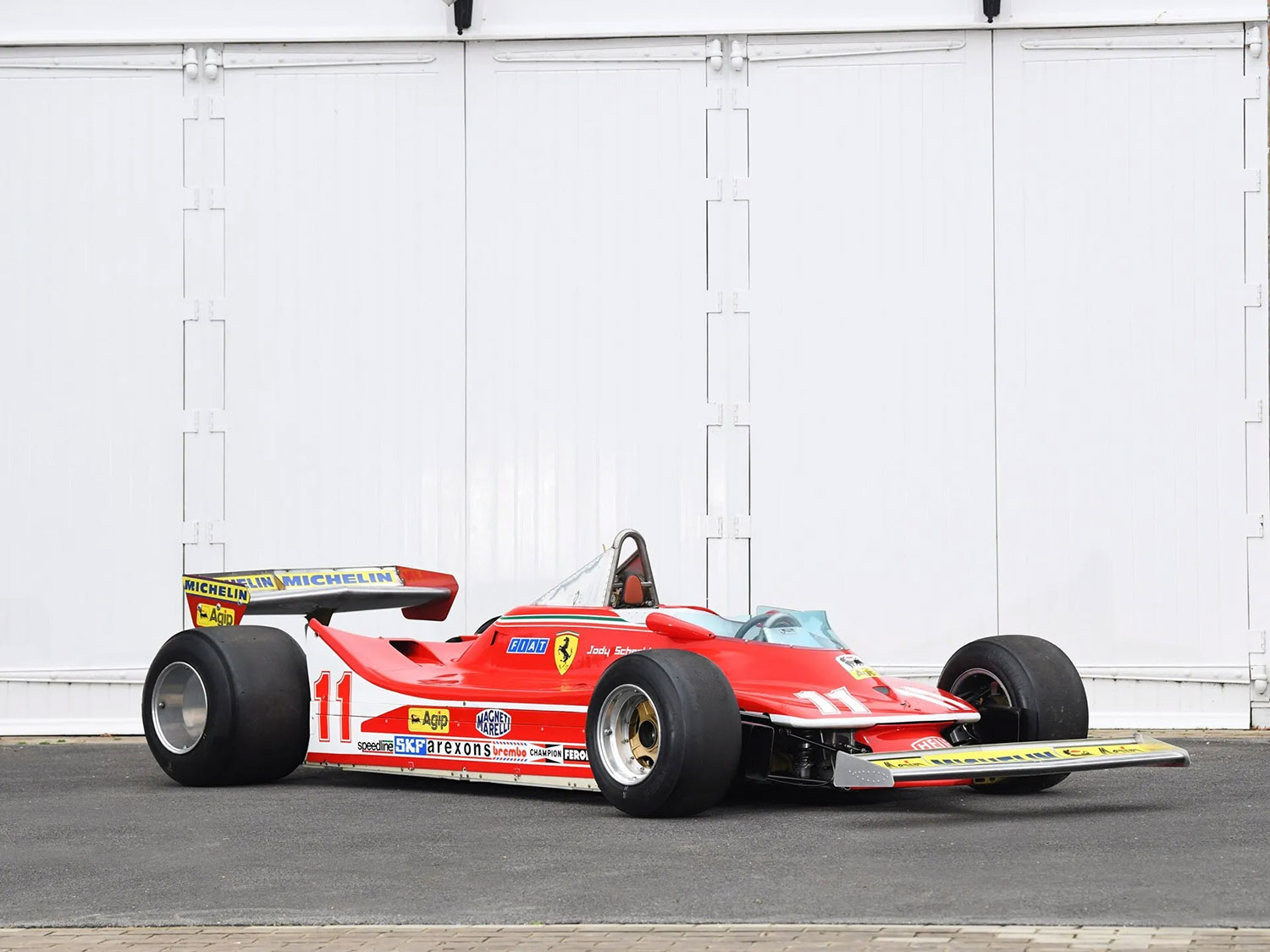
Scheckter Ferrari up for sale in Monaco
Scheckter Ferrari up for sale in Monaco
Jody Scheckter’s 1979 Ferrari 312 T4 will cross the block for an estimated €5,250,000 – €6,500,000 at RM Sotheby’s Monaco sale from 10th to 11th May.
Other highlights include a Kremer Racing Porsche 917, McLaren M23 and a McLaren Elva in a sale studded with motorsport and road car jewels.
The 312 T4 is one of a number of lots from the Jody Scheckter Collection and was Enzo Ferrari’s last F1 drivers’ championship-winning car. It won the Belgian, Monaco and Italian Grands Prix on the way to the constructors’ championship. This very chassis is the one that took the chequered flag at Monza to seal both titles.
Built by famed Italian designer Mauro Foghieri, the 312 was Ferrari’s first ground-effect car powered by a 3.0-litre flat-12 engine.
Bought by Scheckter in 1982, the car comes with its original bill of sale and is beautifully original, with heavily worn seat belts that are a testament to its success in the field. The car raced nine times in 1979 in total and has only ever been driven by Scheckter, including more recently at 2019’s Monza Grand Prix weekend.
We understand that every vehicle is unique, which is why our Agreed Valuation policies take the true value of your classic car into account.
Our next lot – a 1981 Porsche 917 K-81 – can claim similar pedigree to Scheckter’s Ferrari and is estimated to make €3,500,000 – €5,000,000.
In all, the 917 competed in just 23 world championship races, remarkably winning 15 of them before it was rendered ineligible in 1972. From there, the 917 secured consecutive titles in the 1972 and 1973 North American Can-Am Championships.
This particular 917 was built by Kremer Racing 12 years later after Group 6 regulations for the 1981 World Endurance Championship were relaxed. As a result, this car was the last 917 to race at Le Mans, with Bob Wollek, Xavier Lapeyre, and Guy Chasseuil behind the wheel.
Dubbed the 917 K-81, Kremer built the car to make the most of contemporary tyres and aerodynamics and had a Kremer-built aluminium space frame with additional triangulation reinforcement and thicker-gauge tubing to stiffen the chassis.
Nevertheless, short gearing and a draggy rear wing hampered the car’s qualifying run, and it could only manage 18th place on the grid. However, longer gears were installed for the race, with lead driver Wollek climbing to ninth overall. The car was retired after Lapeyre hit a kerb and broke an oil pipe, resulting in catastrophic engine damage.
The car’s second and final outing would prove more fruitful. It led at Brands Hatch during the final round of the 1981 World Endurance Championship – driven by Wollek and Henri Pescarolo – before suspension trouble forced it to retire on lap 52.
Since then, the car has competed in several show events, including the Le Mans Heritage Club Concours at the 2014 Le Mans Classic, where it was awarded the Special Jury Prize.
With a rebuilt engine and a meticulous maintenance record, the Porsche 917 K-81 could be your entry ticket to a host of historic racing events.
Another car with a hefty price tag is this 1973 McLaren M23. Another lot from the Jody Scheckter Collection, it’s expected to fetch between €1,750,000 – €2,250,000.
Thought to be one of McLaren’s best Formula 1 designs, the M23 took the company’s first constructors’ championship in 1973 and two drivers’ championships in 1974 with Emerson Fittipaldi and 1976 with James Hunt.
Peter Revson used this car for much of the 1973 season, taking it to victory at the British Grand Prix. Entered into 63 races, it was part of McLaren’s factory collection before the Scheckter Collection bought it. The car is eligible for historic events, including the Monaco Historic.
Racing cars feature throughout the sale, covering a broad range of disciplines. Our picks include a 1991 Audi V8 quattro DTM car (€750,000 – €1,000,000), a 1998 Roock Racing Porsche 911 GT2 (€750,000 – €1,000,000), and a 1977 Tyrell P34 six-wheeler offered at no reserve.
The road car contingent is no less illustrious, spearheaded by a windscreen-less 2022 McLaren Elva that’s set to make between €1,100,000 and €1,500,000 – someone could make a steal, given that the car was originally bought for €1,515,301 back in 2022.
That’s particularly true as this car is chassis #001 of a production run of just 149 cars and comes with €90,000 worth of custom options, including Jet Black semi-aniline leather with contrast bronze embroidery and piping. One owner from new, it’s covered less than 5 miles.
Billed as McLaren’s most extreme road car – yes, it is a road car – the Elva weighs just 1,269kg and is powered by an 815PS (599kW) twin-turbocharged V8. As a result, it can go from 0-62mph in 2.8 seconds, 0-124mph in 6.8, and if the road rash doesn’t get you first – can hit 203 mph flat out.
That the McLaren makes our next lot – a 2011 Porsche 911 GT2 RS (€315,000 – €350,000), one of Porsche’s most hardcore road machines – look shy and retiring tells you all you need to know. While the GT3 is all about scalpel like finesse, the GT2 is a twin-turbocharged sledgehammer that harks back to a time when 911s had to be handled with kid gloves, and its all the more appealing for it.
Images courtesy of RM Sotheby’s.
Get an online quote in minutes or call us
Monday to Friday from 09:00 - 19:00
Saturday from 09:00 - 14:00
Sunday from 10:00 - 14:00
or Arrange a call back.
Get an Online Quote Now
Arrange a Call Back
win a year's car insurance
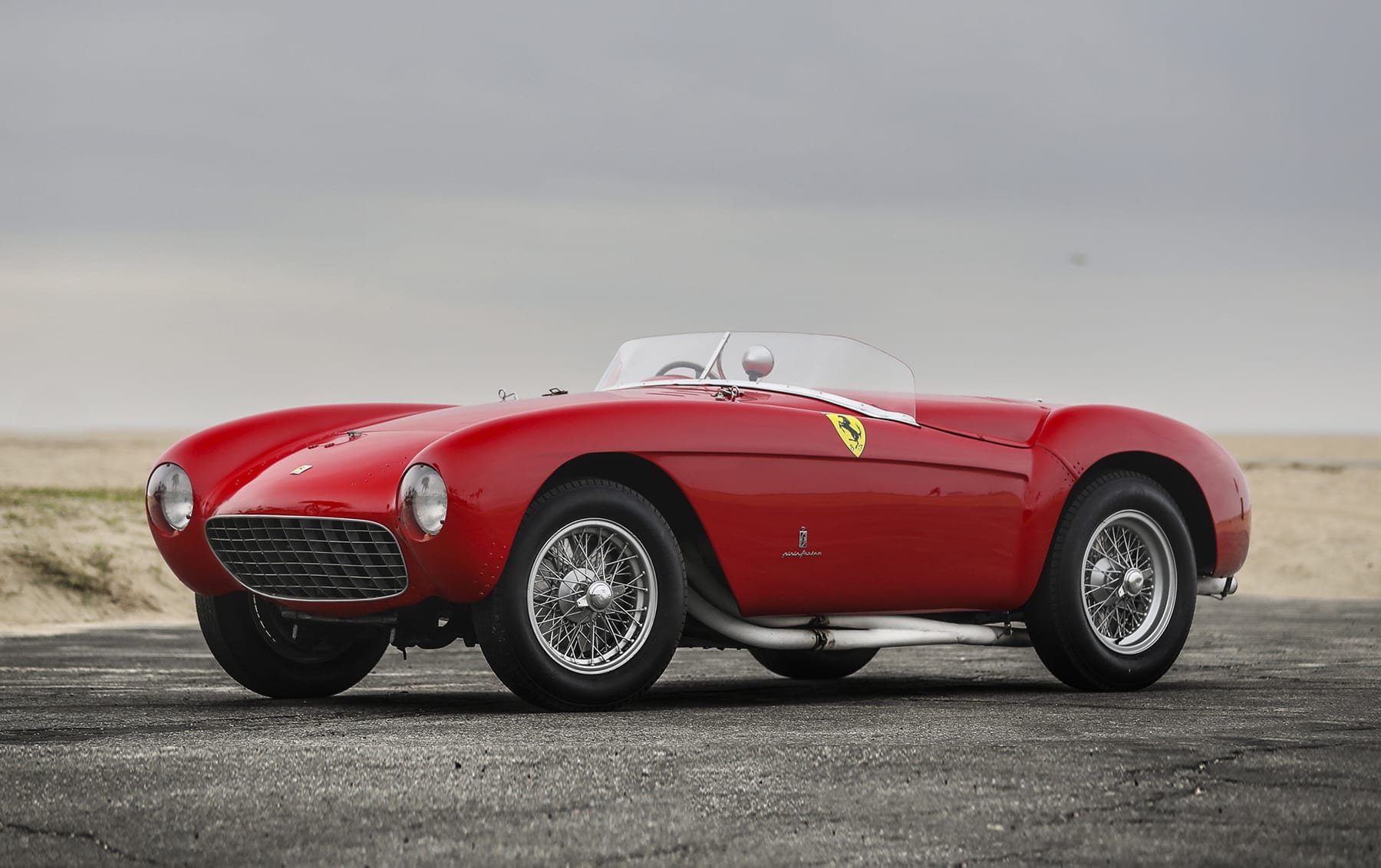
1954 Ferrari 500 Mondial Series 1 Spider for sale at Amelia Island
1954 Ferrari 500 Mondial Series 1 Spider for sale at Amelia Island
A one-of-14 Pinin Farina-bodied 1954 Ferrari 500 Mondial Series 1 Spider is estimated to fetch between £3-4 million pounds when it crosses the block at Gooding & Co’s Amelia Island Auction from 29th February to 1st March.
The Ferrari was delivered new to Dutch racer Herman Roosdrop via Garage Francorchamps and went on to compete in period at Spa and Zandvoort as well as being exhibited at Pebble Beach in 1978 and at the 1000 Miglia Retrospective in 1990 and 1994. The matching number’s car’s past owners include respected collectors such as Ed Niles, Peter Sachs and David Sydorick.
Unveiled in 1953, the 500 Mondial was Ferrari’s first four-cylinder production car named in honour of Alberto Ascari’s back-to-back World Championship wins in his Ascari 500 F2 Monoposto.
The Mondial’s four-cylinder, twin-cam engine – known inside Ferrari as the Tipo 110 – was a direct development of the engine in the Italian’s Grand Prix machines and featured advances like gear-driven cams, dry-sump lubrication, hemispherical combustion chambers, twin-spark ignition and Weber DCO carburettors. The Mondial 500’s name came from the fact that each cylinder displaced 500ccs.
Under its skin, the Ferrari featured a tubular steel chassis with independent transverse leaf-spring suspension, a De Dion rear axle, finned drum brakes and a four-speed transaxle gearbox. It was enough to secure the model class wins at Barcelona, Casablanca, Imola, and the Mille Miglia.
Sold to Herman Roosdrop as a replacement for his Jaguar C-Type, he guided Lot #30 to a fifth-place class finish on its maiden outing at the Spa-Francorchamps on 23rd May 1954. A second-place overall finish would come a month later on the same track.
We understand that every vehicle is unique, which is why our Agreed Valuation policies take the true value of your classic car into account.
Roosdrop sold the car to fellow Dutchman Simon Maasland, who bought it for his son to go racing in, confidence that was rewarded with two first-place finishes at Zandvoort in 1955 and 1956 before the car was imported to the US in 1964 by its new owner Chuck Fee. He then sold it to Ferrari enthusiast Ed Niles, who had the car restored and exhibited it at Pebble Beach in 1978.
The Ferrari passed through various owners before being snapped up by an LA-based Ferrari collector in 2018, where it has stayed since.
It’s believed to be one of the few survivors to have a chassis, body, engine, and transaxle with matching numbers. The only parts not believed to be original are its Weber carbs and tubular shock absorbers.
The car also comes with extensive documentation, including copies of the factory build sheet, period images, magazine articles and correspondence.
Get an online quote in minutes or call us
Monday to Friday from 09:00 - 19:00
Saturday from 09:00 - 14:00
Sunday from 10:00 - 14:00
or Arrange a call back.
Get an Online Quote Now
Arrange a Call Back
win a year's car insurance
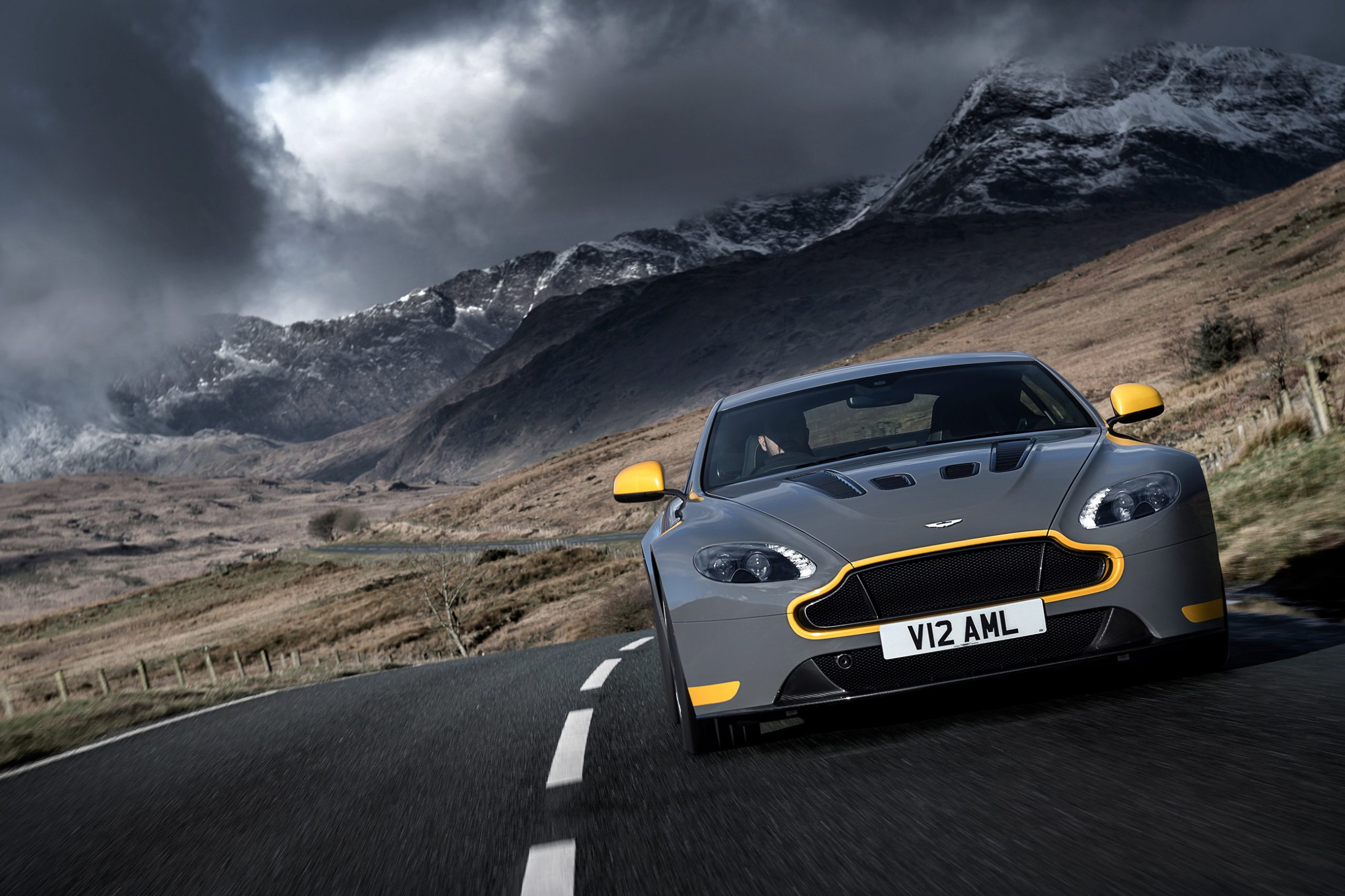
The best sub-£100k investment cars for 2024
The best sub-£100k investment cars for 2024
In the current climate of spiralling interest rates, soon £100,000 won’t get you more than a Mars bar and a packet of crisps so, while you still can, get the money invested in the dream machine you’ve always promised yourself.
We’ve got something for everyone here, from limited-edition hot hatches to big-engined GTs and a history-defining super saloon. Will any of them appreciate it? That remains to be seen but at the very least, you will enjoy owning them.
1. BMW M3 CSL
As sure as the earth is round and what comes up must come down, a BMW M3 CSL must feature on a list of the best investment cars for less than £100,000. Using what is widely accepted to be the best BMW M3 – the E46 M3 – as a base, the CSL stripped it of 136kg weight (and fog lights), stiffened up the chassis and blessed it with a carbon-fibre airbox that produces one of the best induction noises we’ve yet encountered.
Power, meanwhile, went up by 17PS – to 360PS (265kW) – and 0-62mph dropped from 5.2 to 4.9 seconds. The elephant in the room is the BMW’s automatic single-clutch transmission which is, well, slow and not very good. The question is, do you drive around the gearbox’s limitations or save yourself the bother and retrofit a six-speed manual? Jerky auto or not, the CSL seems like one of the safest ways to make money on a car that can still be had for well under £100,000.
2. Aston Martin V12 Vantage S
There’s something delightfully endearing about putting a large engine in a small car and the Aston Martin V12 Vantage S proves that to the full. To create it, Aston took the smallest and lightest chassis available at the time and then fitted it with the 573PS (421kW) 5.9-litre V12 from the DBS. The result? A top speed of 205mph and 0-62mph in just 3.7 seconds.
Thankfully, Aston also sorted out the chassis. The V12’s suspension sits 15mm lower and is 45 per cent stiffer than the standard car’s, giving greater composure without sacrificing comfort. Perhaps the best part of the V12 Vantage is its pumped-up looks courtesy of long bonnet vents, wide sills and aggressive front and rear bumpers. It’s far more striking than the standard car. Yet, manual versions of the V12 can still be scooped up for well under our £100,000 limit. You can wager it won’t stay the same for long.
3. Lotus Carlton
Few cars define their era quite as well as the Lotus Carlton – the fastest saloon of its day, the Daily Mail launched a campaign to ban it, while smash-and-grab robbers found themselves an ideal getaway vehicle. Law-abiding drivers also loved the Carlton. Lotus got the styling just right adding a subtle body kit and a (slightly less subtle) rear wing in what would become a blueprint for the modern performance saloon.
The performance, meanwhile, is impressive even today. The Lotus’ 382PS (281kW) twin-turbo 3.6-litre V6 is good for 0-62mph in around five seconds and with no nannying speed limiter (ala a contemporary German performance saloon), the Lotus was good for 177mph. Sadly, the delights of the Lotus Carlton have not gone unnoticed and a clean one will set you back close to our £100,000 self-imposed limit. Cheap for such a large slice of motoring history.
4. Maserati Gransport
As a Maserati that goes as well as it looks, the Gransport brings cause for celebration.
Even without the distinctive ‘boomerang’ tail lights of the original 3200GT, the Gransport cuts an athletic figure that’s enhanced with a subtle body kit and 10mm lowered suspension, giving a sense of menace that was absent on the original. Subtle changes were made beneath the skin, too.
In the Gransport, Maserati’s 4.2-litre V8 produced 400PS (294kW) – ten more than before – you get adjustable suspension and a sports exhaust that gleefully opens its flaps at 4,000rpm. Even the Cambiocorsa automated manual gearbox gives faster shifts.
The result is a car that’s as happy grand touring as it is dissecting your favourite B roads and with prices still low – you can pick up good examples for less than £40,000 – the Gransport makes for a tantalising used buy that’s ripe for appreciation.
5. Porsche 997 911 GTS
If the 997 represents the sweet spot in Porsche 911 production, then the GTS provides the icing to the proverbial oily cake – it’s one of the best road-going 911s ever built. The 997 has the small size of the 996 but without the goofy fried egg headlights, while a slick manual gearbox and hydraulic power steering mean it still feels like an analogue Porsche.
But the engine is the superstar. With no turbos to choke its voice or responses, the GTS’s 408PS (300kW) 3.8-litre flat-six gets from 0-62mph in 4.6 seconds and will hit 190mph flat out. It’s a spine-tingling experience and the fact you have to work for it only makes it better.
By contrast, newer 911s – faster and more accomplished, true – struggle to match the 997’s engagement, which makes the GTS seem like a bargain when good manual examples can be had for less than £80,000.
6. Ferrari F430 manual
Predicting the next Ferrari that will shoot up in value isn’t easy, but we reckon a manual F430 is a safe bet. Looking like a shrunken Enzo can only be a good thing, but more than that the F430 brings the world of old and new Ferrari together. So, while you get a screaming flat-plane crank V8 mated to an open-gate manual gearbox, you also get a manettino dial on the steering wheel linked to the F430’s electronically controlled limited-slip differential.
The result? This Ferrari can pull your heartstrings like few other cars, but there’s always an electronic safety net to fall back on. Sadly, the delights of a manual F430 have not gone unnoticed and while you’ll get one for under £100,000, you’ll pay a significant premium over an identical automatic.
7. Lotus Elise 240 Final edition
While some investment cars are reaching middle age and will likely require a bit of work, the Lotus Elise 240 Final Edition was only introduced in 2021. As the name hints, the Final Edition is the runout version of Lotus’ bestseller, coming complete with unique paint jobs and badging, and a lovely set of forged alloy wheels.
The Final Edition shows you what 25 years of Lotus Elise development looks like so while it weighs 200kg more than the original it comes packing a 243PS (179kW) supercharged four-cylinder that would make mincemeat of the old Rover K-series. Factor in daily usability that eclipses the abilities of the original Elise and there are plenty of less enjoyable ways to spend a hard-earned £50,000 or so.
8. Honda Civic Type R Limited Edition
The outgoing Honda Civic Type R’s styling (more like a billboard saying “race me” to anyone in visual range) might not have been to everyone’s tastes, but few could argue with the way the explosive Honda drove. Its 320PS (235kW) 2.0-litre engine hunted the redline like any self-respecting VTEC should while turbocharging delivered performance which made the official 0-62mph time of 5.7 seconds seem unduly pessimistic.
The Civic Type R could annihilate A and B roads in a way that would embarrass most supercars, thanks to a stiff chassis and the expertly damped suspension’s ability to absorb any bump or camber you cared to throw at it. A swift glance at the rapidly rising speedo was the only clue to how outrageously fast you were going.
Buying as a long-term investment? Then you best seek out the Type R Limited Edition, barely used examples of which can be scooped up for less than £55,000. As the best example of the best hot hatch of the current era, prices can surely only go up – can’t they?
Get an online quote in minutes or call us
Monday to Friday from 09:00 - 19:00
Saturday from 09:00 - 14:00
Sunday from 10:00 - 14:00
or Arrange a call back.
Get an Online Quote Now
Arrange a Call Back
win a year's car insurance

The best sportscars for under £100k
The best sportscars for under £100k
You’re hitting the upper reaches of middle age, the kids are safely dispatched to university and you suddenly find yourself with money to burn – could now be the time to blow £100,000 on the sportscar you always promised yourself?
Of course it is. And, with a healthy 100K budget behind you, you won’t be short of choices. This guide has everything from a mid-engined plug-in hybrid to front-engined GTs, rear-engined track refugees and a Ferrari estate. Here are the eight best sportscars available for no more than £100,000.
Chevrolet Corvette Stingray
The Corvette Stingray marked a turning point for Chevrolet. No longer was the company going to play also-rans to the European competition, this time it would face them head-on. To do it, the Stingray would be the world’s first mid-engined Corvette with more than a passing resemblance to the Ferrari 458, which Chevrolet benchmarked its car against. It’s unsurprising then that the Stingray features a 497PS (366kW) 6.2-litre flat-plane crank V8 that gets it from 0-62mph in under three seconds.
The accompanying howl has more than a hint of Maranello. With its mid-engine setup, the latest Corvette offers turn-in grip and corner-exit traction that the old model could only dream of. Sadly, the attainable pricing that makes the Corvette huge in the US doesn’t survive the UK tax system, but less than £100,000 for a brand-new mid-engined supercar still sounds like a bargain to us.
Mercedes AMG-GT
The Mercedes-AMG GT was meant to be a more affordable replacement to the SLS – a stunning car that’s price put it out of the reach of most Porsche 911 owners. A sales no man’s land. To keep costs low, the AMG GT lost the SLS’ eye-catching gullwing doors, but the distinctive long-bonnet-stubby-rear shape remained.
Out went the old naturally aspirated 6.2-litre V8 and in came the ubiquitous twin-turbocharged 503PS (370kW) 4.0-litre V8 (that’s powered everything from the C-Class to the G-Class). Straight-line performance was guaranteed – 0-62mph took 3.2 seconds and top speed was 193 mph – but more surprising was the car’s handling balance thanks to a front-mid-engined layout and transaxle. Prices start from around £50,000 but you’ll need closer to £70,000 for a good one.
Lexus LC500
Lexus is no stranger to nosing its way into new markets – the inaugural LS400 beat the Europeans at their own game by being better built and more luxurious – but could it pull off the same trick with a sportscar? Of course it could. The LFA hypercar had already tenderised the market to the idea of a sporty Lexus when the LC500’s shape was revealed to dropped jaws at 2016’s Detroit motor show. Not only did it look gorgeous on the outside, inside it had a beautifully sculpted interior that would have looked at home in cars costing three times as much.
Power came from a Lexus 477PS (351kW) 5.0-litre V8 that rumbled at low speeds and thundered as the needle spun towards the rev limiter. Stiff suspension, meanwhile, prioritised handling, but the LC500 is still a car you can cover lots of miles in. With good LC500s starting from less than £50,000 – and with Lexus’ famous reliability at the top of our minds – it’s hard to imagine another sportscar that blends passion and practicality quite so well.
Aston Martin Vantage
The Aston Martin Vantage represented a new dawn for Aston, one where it borrowed engines and tech from Mercedes. Power came from the same twin-turbocharged 4.0-litre V8 as the AMG GT, producing 510PS (375kW) and giving the Vantage performance that its naturally aspirated predecessors could only dream of – 0-62mph took 3.6 seconds and onto a top speed of 195mph. Handling was also excellent. Matt Becker (former chief engineer of Lotus) ensured the Vantage offered grip and finesse that were unknown to the firm’s road cars up until this point.
Aston didn’t get everything right, though. The Vantage’s odd grille design divided opinion, while the cabin’s ancient Mercedes switchgear was poor for a near £150,000 GT. That’s less of an issue now you can pick up a good example for half the original price.
Lotus Emira
Lotus fans are used to false dawns – who could forget Dany Bahar’s five-model reveal of the 2010 Geneva Motor Show, none of which came to anything. But the Emira looks like a car that could turn around the company’s fortunes. Mostly because it looks absolutely awesome. Ironically, under the new suit, there’s not much new about the Lotus’ bonded aluminium chassis or supercharged 365PS (269kW) 3.5-litre Toyota V6 – both of which are carried over from the old Evora.
Nevertheless, the Emira blends h serious performance and Lotus’ unerring ability to build a car that feels sharp and agile, but can also filter out the worst the UK’s crumbling road surface can throw at it. Prices start from under £85,000 for an as-new example.
BMW i8
The BMW i8 looked like nothing else on the road when it went on sale in 2014 because – as a plug-in hybrid, mid-engined sportscar – it was like nothing else. A combination of a 1.5-litre three-cylinder Mini engine with two electric motors meant the four-wheel drive i8 produced 374PS (275kW), got from 0-62mph in 4.4 seconds and topped out at 155mph. All while having a pure-electric range of more than 20 miles.
Sadly, while the performance was there, the i8’s handling fell wide of the mark expected of a truly engaging sportscar thanks to unnervingly light steering and a propensity to understeer. But if you’re looking for a sportscar you can use guilt-free during the week, while still enjoying it at the weekends, the i8 could be just the ticket. Good i8s can be picked up for less than £50,000 while Roadster drop-top will set you back closer to £60K.
Ferrari FF
Anyone who thinks a Ferrari sportscar can’t also be practical didn’t bet on the appearance of the Ferrari FF – a four-wheel drive shooting-brake estate, with a 6.3-litre V12 engine borrowed from the Enzo hypercar. With 659PS (485kW) to call on, the FF was predictable rapid – 0-62mph took 3.7 seconds, while top speed was a sky-high 208mph.
The four-wheel drive system was a masterpiece in itself. The FF was essentially rear-wheel drive up until it needed more grip, whereon power was sent directly to the front wheels via a separate gearbox. The result was un-ending traction, mated to razor-sharp steering and a fine-handling chassis that meant the Ferrari felt far smaller than it actually was.
Impressive, given the FF was a genuine four-seater with a 450-litre boot capacity. Sadly, this list of attributes doesn’t come cheap, with good examples costing every pound of our £100,000 budget.
Porsche 997 911 GT3
If you’re going to buy a sportscar on a budget of £100,000 then the Porsche 997 generation 911 GT3 could be the safest place to put your money. Like all Porsche GT cars, the 997 GT3 is a handling masterpiece offering up cornering grip and under-power traction that feels contemporary today. Although, unlike in the current model, the 997 GT3 comes sporting a feelsome hydraulic engine and a high-revving Mezger flat-six that’s become almost as acclaimed as the 911 itself.
The new version simply isn’t quite so spin-tingling. Despite all this, however, the 997 GT3 can still be sold as a sensible choice. It’s not too OTT for road use, while a boot under the bonnet and more storage, where you used to find on the back seat, means it can even claim to be practical…for a two-seater sportscar.
Best of all, it makes financial sense. Rock solid residuals mean the £80,000 you’ll need to buy a well-used-but-cared-for example, is exactly what you’d have paid new back in 2006.
Get an online quote in minutes or call us
Monday to Friday from 09:00 - 19:00
Saturday from 09:00 - 14:00
Sunday from 10:00 - 14:00
or Arrange a call back.
Get an Online Quote Now
Arrange a Call Back
win a year's car insurance
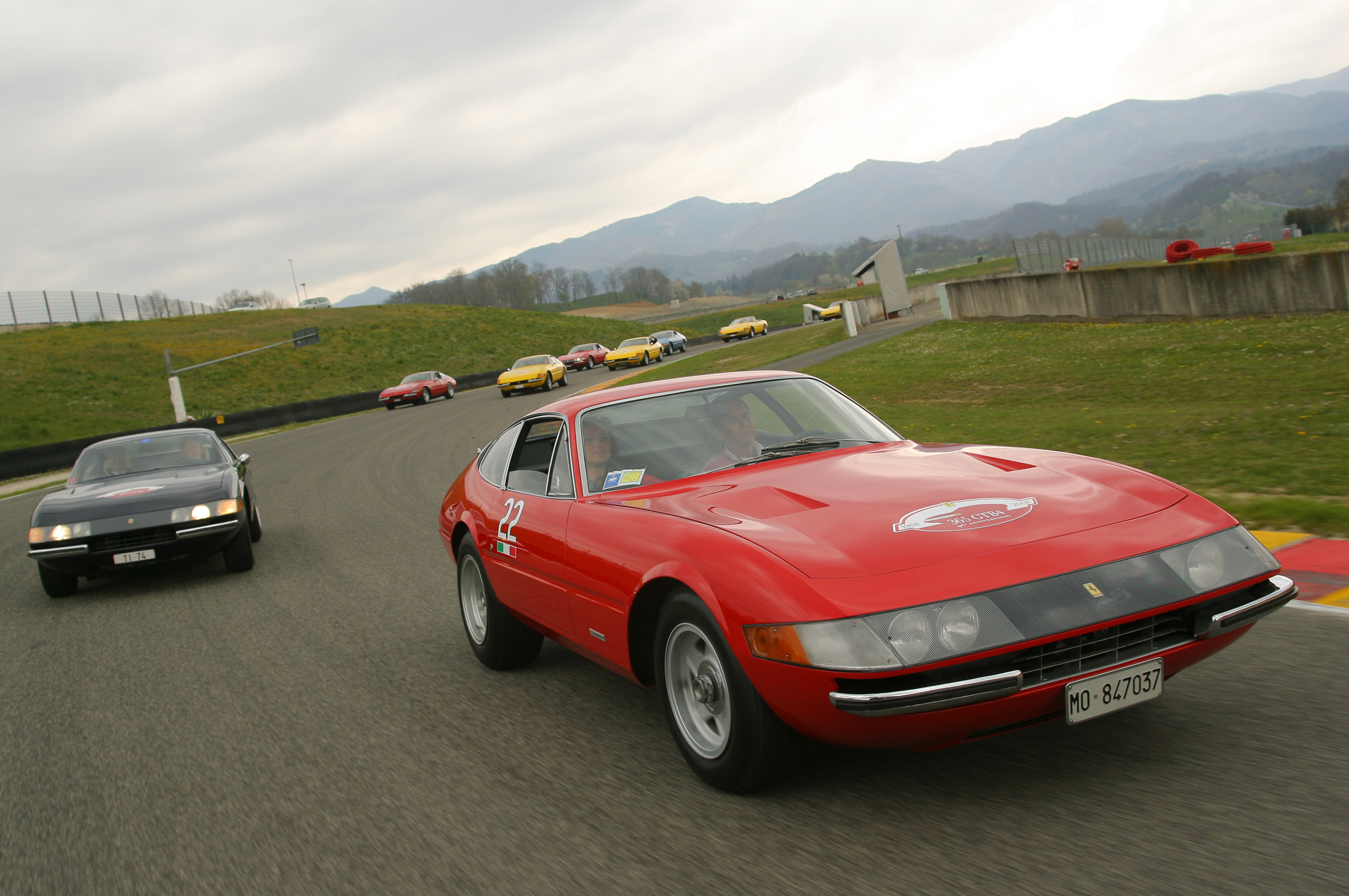
Goodwood Classic Solutions at the 2023 Festival of Speed
Goodwood Classic Solutions at the 2023 Festival of Speed
Goodwood Classic Solutions is joining the action at the Festival of Speed this weekend. Anyone attending can also get into the draw to win two four-day passes to the Festival of Speed in 2024, simply by visiting us at our stand and getting a quote, or sharing your renewal date to get a quote later in the year. The view the full terms and conditions of the competition, click here.
Our friendly team of experts will be on hand to talk you through the options available to you with Goodwood Classic Solutions, while you can also get a closer look at three beautiful classics which will be on display at the GCS stand.
Learn more about everything going on at this year’s Festival of Speed.
We understand that every vehicle is unique, which is why our Agreed Valuation policies take the true value of your classic car into account.
We understand that every vehicle is unique, which is why our Agreed Valuation policies take the true value of your classic car into account.
1961 Jaguar E-Type 3.8 Series 1 Roadster
When the long, low and lithe Jaguar E-type was first revealed to huge gasps of delight at the Geneva Salon on 15th March 1961, no less than Enzo Ferrari described it as “the most beautiful car ever made.” This extraordinary high praise set the tone for the now-legendary E-type’s long and successful 13-year production run in both closed Coupe and open Roadster body styles.
The OBL Jaguars served not only as prototypes for the entire E-Type production run but also helped pave the way for the E-Type racers, with very few OBL cars alike, this example being the 88th RHD model built (on 21st July 1961).
Finished in its original dark Opalescent Blue coachwork with black folding roof, over a light blue interior (which is in fact grey), this is one of just five early examples finished in this striking colour combination.
Starting Insurance cost: £197.75 ( based on £99k value )
1988 Porsche 911 Carrera 3.2 ClubSport
The Porsche 911 ClubSport (option M637, often referred to ‘CS’) was based on the Model Year 1988 911 Carrera 3.2. The CS was designed as a lightweight project, saving some 70kg over the regular 911 coupe, achieved by eliminating the electric front seats, rear seats, rear wiper, spot lamps, sound proofing, and so on. Even the passenger sun visor was removed!
All but one of the 53 RHD UK-market CS models built (with 340 globally) were finished in Grand Prix White with red wheels and graphics, the unique exception being the reverse combination. With firmer suspension, stiffer engine mounts, LSD and a blueprinted engine, the CS had acclaimed handling and road manners to give a more involving and aural driving experience.
Starting insurance cost: £599.50 ( based on £127,000 value )
1972 Ferrari 365 GTB/4 ‘Daytona’ Coupe
This evolution of the Ferrari 275 GTB4 was a milestone in the history of high-performance front-engined sportscars. Its sleek, modern and influential Pininfarina lines were matched by a development of the 4.4-litre V12 motor, fed by six Weber town-choke 40 carburettors, with an exceptional weight distribution provided by the rear gearbox transaxle to produce a GT of rare balance to guaranty a unique driving experience.
The 365 GTB/4 is more familiar to motoring enthusiasts as the Ferrari Daytona, although the model never officially carried that name from Maranello. With 1,284 examples of the sublime GT Coupe built between 1968 to 1973 as the last of the great V12 front-engined Ferraris of the era.
The example presented here is the more prolific ‘Series 2’ model, easily identifiable by its fixed quad headlights, mounted behind a clear Perspex glass cover. Just a handful of the earliest 1969 365 GTB/4 were with pop-up headlamps.
Starting insurance cost: £1,923.25 (based on £2 million value )
Get an online quote in minutes or call us
Monday to Friday from 09:00 - 19:00
Saturday from 09:00 - 14:00
Sunday from 10:00 - 14:00
or Arrange a call back.
Get an Online Quote Now
Arrange a Call Back
win a year's car insurance
Goodwood Classic Solutions Insurance will provide you with quotes from a selection of trusted insurers who specialise in covering vehicles like yours.
Goodwood Classic Solutions Insurance takes the time-consuming comparison work out finding the best insurance policy for your vehicle.
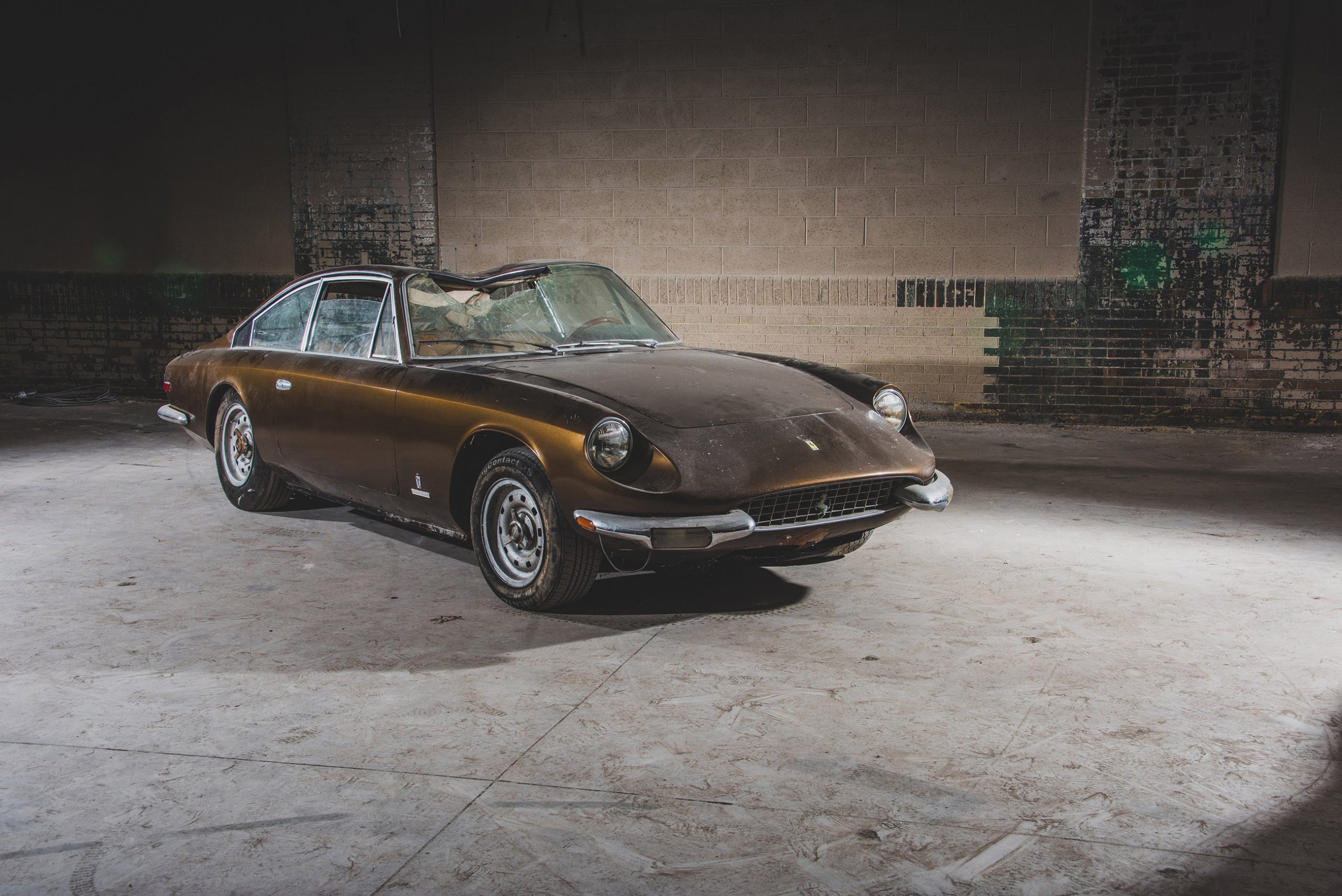
‘Lost and found’ Ferraris up for sale in Monterey
‘Lost and found’ Ferraris up for sale in Monterey
250GT, 500 Mondial Spider, 275 GTB, 512 BB Competizione… classic Ferraris worth an absolute fortune and normally seen primped to perfection on the world’s most exclusive concours lawns and racetracks. So what on Earth what happed to this lot, surely the most knackered stable of Prancing Horses you have ever seen?
Calling this collection of 20 Ferraris a “barn find” has to be the understatement of the year. Some of them look as though they belong on a scrapheap or in a breakers’ yard. But looks can be deceptive and even in this condition they are still expected to sell like hot cakes. And for millions of pounds.
There are 20 Ferraris in what RM Sotheby’s is calling the Lost & Found Collection. All will be sold – some changing hands for the first time in five decades – at the auction house’s sale during Monterey Car Week in the US in August. They are being sold as seen, and at no reserve price.
All the cars need restoring, some complete rebuilding. Damage varies. The most smashed-up bear scars of a roof collapse when the building in Florida they were being stored in was hit by a hurricane in 2004. They were moved to a secret warehouse where they have languished, unseen, ever since.
While some might look like basket cases, they are anything but because they are mostly complete and often with matching numbers for engines, transmissions and bodies that prove they are essentially the same machines that left the factory when new. Some of them are real rarities and others boast exceptional racing histories and ownership provenance. One was even owned by a king.
Because of all this, their value remains out of all proportion to their appearance. They will shine again, but you sure as heck wouldn’t want to pay the restoration bill…
1954 Ferrari 500 Mondial Spider
Well, where would you start restoring this? At the very beginning, that’s where. Not just a weekend job then. But as RM says, restoring what to our eyes appears to be a wrecked shell of a car “could be a rewarding experience”. It will probably cost a million quid to buy – yes, even looking like this – and will cost another million to fix up, but then it’s a 500 Mondial – in fact the second Mondial ever built, and one of 13 first-series Pinin Farina Spiders. Further, it has a distinguished racing history in the Mille Miglia, Targa Florio and Imola Grand Prix with drivers who included Ferrari works ace Franco Cortese. The Mondial has been left as-is for more than 45 years after being damaged in a race, but one day it will look glorious again…and be worth many millions.
1956 Ferrari 250 GT Speciale
Look past the rust, the tired paint, missing glass, falling apart interior and filthy engine bay and see instead what this car is: one of four unique 250 GTs bodied by Pinin Farina during 1956, and as originally owned by King Mohammed V of Morocco. So this Speclale is special indeed, made more so by its correct numbers-matching V12 engine. Why does it look the way it does? Almost 50 years of complete neglect, is why. It’s reported it could sell for as much as £1.8m
1969 Ferrari 365 GT 2+2
Ouch! The sleek Pininfarina looks definitely came off second best when the barn roof collapsed on top of this 365 GT. Ferrari’s ultimate grand tourer of its day, this is the first time the car has been seen since 1979.
1965 Ferrari 275 GTB/6C
It looks a little different today than it did in 1965 when this very car was Ferrari’s star exhibit at the Turin Motor Show. As the first 275 long-nose with an alloy body and six carburettors, it’s an important car in the 275 GTB story, as well as for a competition history that includes the 1965 Targa Florio. It’s been hidden away for 44 years.
1966 Ferrari 330 GT 2+2
Definitely on the shabby side, but at least this Prancing Horse is in one piece. With its matching numbers Colombo V12 engine and five-speed ‘box, it’s one of the desirable dual headlight models and rare too, one of just 36 right-hand drive Series II models made. It was originally supplied in the UK by Maranello Concessionaires of Egham to an owner in East Africa and believed subsequently to have been owned in the UK by the racing driver David Piper.
1968 Ferrari Dino 206 GT
This Dino is still among the prettiest cars ever, even in this distressed state. The paintwork, engine bay and interior have all gone to pot but it’s largely undamaged and one of the less daunting resto projects. And it would be worth it, for this is one of 153 Dino 206 GTs with an all-alloy body and is thus far rarer (and much lighter) than your common or garden steel-bodied Dino.
1978 Ferrari 512 BB Competizione
This racing BB, veteran of the 24 Hours of Le Mans in 1978, looks in pretty good shape at first sight, almost as though it hasn’t been touched since retiring (with gearbox trouble) in the 19th hour when running in 11th place. Which is pretty much exactly what happened. The BB had been entered as car number 87 for the North American Racing Team (NART), as its untouched 1978 livery shows. Its restoration will be sure to keep its racing authenticity, but work will be needed under the bonnet and in the cabin. Despite that, this authentic slice of flat-12 racing Ferrari could sell for £2m.
Get an online quote in minutes or call us
Monday to Friday from 09:00 - 19:00
Saturday from 09:00 - 14:00
Sunday from 10:00 - 14:00
or Arrange a call back.
Get an Online Quote Now
Arrange a Call Back
win a year's car insurance
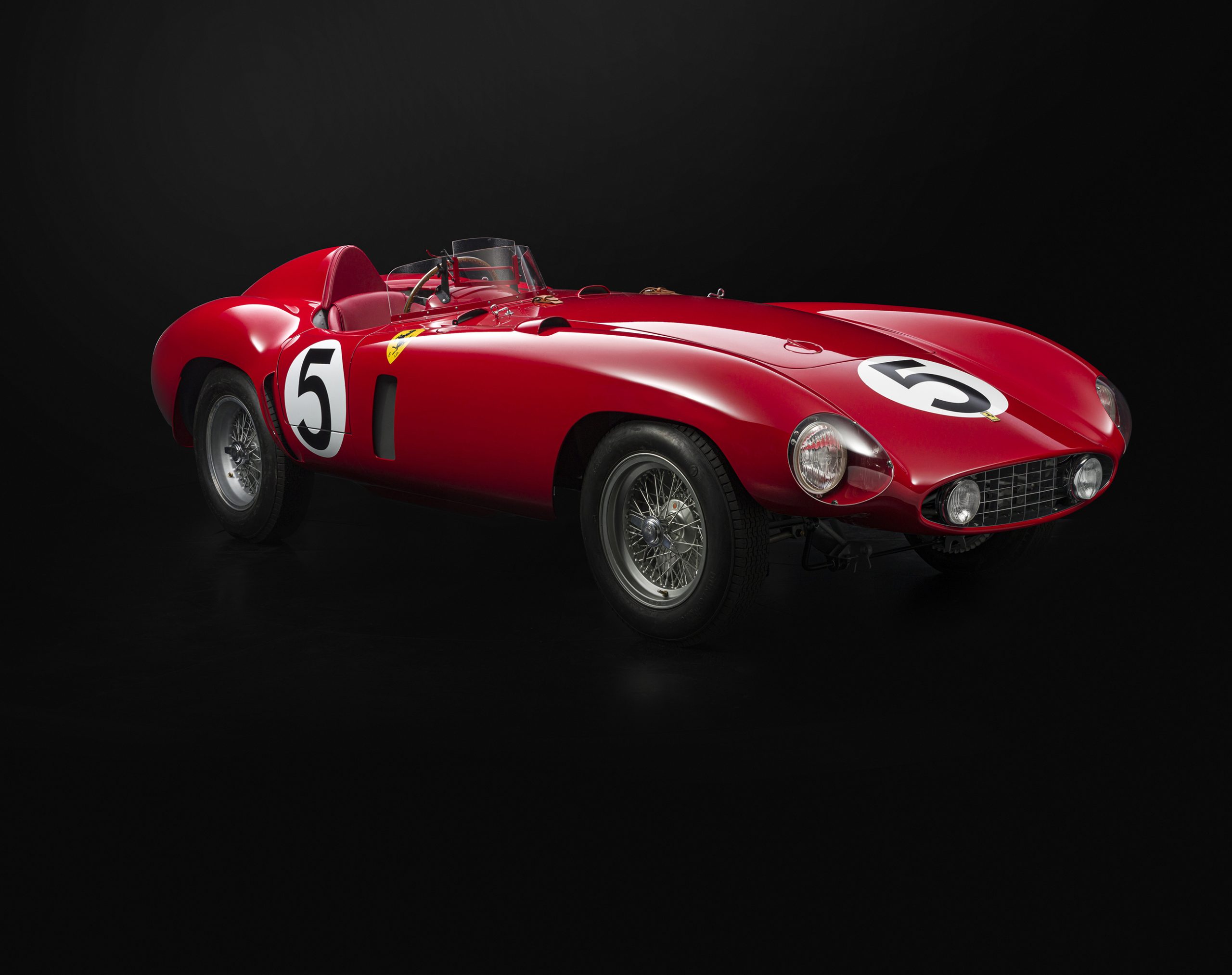
This Ferrari just sold for €5,742,500
This Ferrari just sold for €5,742,500
A 1955 Ferrari 121 LM Spider by Scaglietti topped RM Sotheby’s Le Mans Centenary Auction as the Prancing Horse triumphed in the sale and on track.
The 121 Ferrari competed in 1955’s 24 Hours of Le Mans and that year’s Mille Miglia, and was raced by legendary drivers such as Maurice Trintignant, Harry Schell, and Piero Taruffi. One of just four remaining cars, the Ferrari attracted bids from around the world and went under the hammer for €5,742,500.
More modern machinery came in the form of a 2007 Aston Martin DBR9 GT1 that sold for €2,255,000. Built by Prodrive, it is thought to be one of just 18 in existence. The car demonstrated a strong race pedigree, which included third in the GT1 class and 22nd overall at the 2010 24 Hours of Le Mans, as well as third at the 2008 Silverstone Tourist Trophy and 24 Hours of Spa.
While the Aston featured a stunning Gulf livery, a 1984 Lancia LC2 – a factory-backed sports prototype created to compete in the World Sportscar Championship – wore the iconic Martini colours. It took pole position in the 1984 race, driven by Wollek and Nannini, and also sold for €2,255,000.
Other sale highlights included a 1958 Lister-Jaguar Knobbly (€1,551,875), the only example to ever race at Le Mans and a 2008 Saleen S7-R (€1,298,750), which won the LMGT1 class at the 2010 24 Hours of Le Mans, taking 13th overall.
Another star of the show was a 1954 OSCA MT4 by Morelli. Built by the Maserati brothers, it sold for €1,270,625. Finally, a 1990 Nissan 390CK that took pole position at Le Mans in the hands of Mark Blundell, went under the hammer for €1,073,750.
We understand that every vehicle is unique, which is why our Agreed Valuation policies take the true value of your classic car into account.
Aside from all of the glorious cars to go under the hammer, one other standout lot was the French triclore flag that was waved to start the 1965 edition of the Le Mans 24 Hours. It sold for €396,000, but its story gained new significance this year, as the 1965 just happens to be the last time, prior to 2023 that Ferrari had taken overall victory at the world’s greatest motor race.
Images courtesy of RM Sotheby’s.
Get an online quote in minutes or call us
Monday to Friday from 09:00 - 19:00
Saturday from 09:00 - 14:00
Sunday from 10:00 - 14:00
or Arrange a call back.
Get an Online Quote Now
Arrange a Call Back
win a year's car insurance
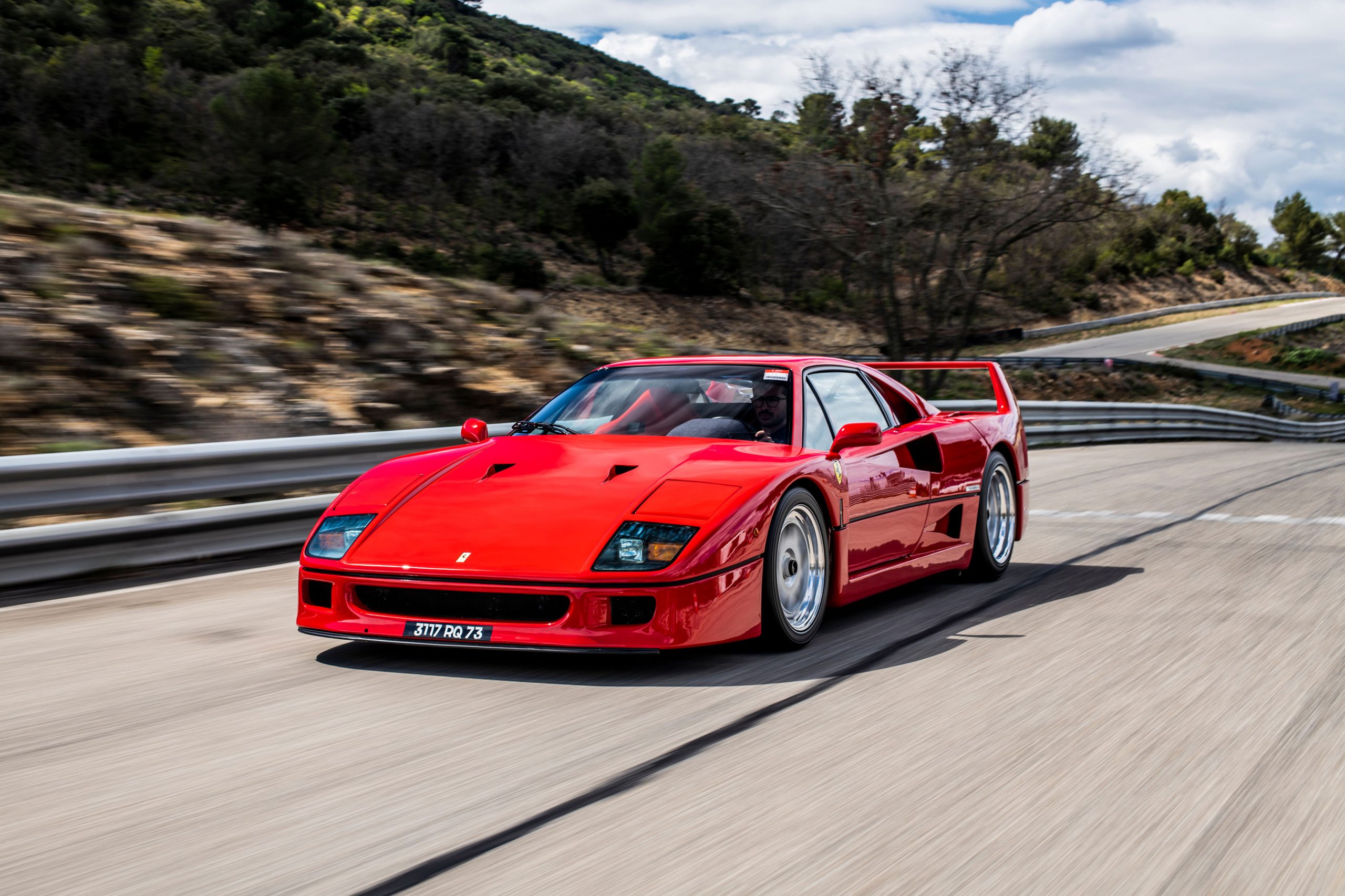
This Ferrari F40 once owned by Alain Prost is for sale
This Ferrari F40 once owned by Alain Prost is for sale
A 1989 Ferrari F40 once owned by four-time Formula 1 World Champion, Alain Prost, will cross the blocks carrying no reserve at RM’s Sotheby’s Sealed auction on 10th-12th May.
Sadly, chassis number 83249 – a non-cat, non-adjustable-suspension car – was never used by Prost, who sold it shortly after Scuderia Ferrari gifted it to him in 1990. However, the legendary driver’s signature is still visible on the roof under a thick layer of clear coat.
In 1997, now owned by Graham de Zille, the F40 would feature in Motor Sport magazine alongside a Ferrari 288 GTO and F50 – all three de Zille’s cars – in an article written by motoring journalist Andrew Frankel. Frankel would surmise: “In the art of deftly controlled savagery, the F40 knows no peers”.
Having passed through a string of illustrious owners, the car was granted Ferrari Classiche certification in 2016 and took second place in the concours at Fiorano that same year, as part of Ferrari’s 70th anniversary celebrations.
Now located in France, with 2,900 miles showing, the F40 has been fastidiously maintained, with a major service carried out in 2019, when new fuel bladders were also fitted. The car has its original front spoiler, Schedoni luggage, fresh tyres, owner’s manual, replacement service book, tool kit and has an odometer converted to miles.
It’s estimated to sell for £2,150,000 – £2,550,000.
Images courtesy of RM Sotheby’s.
